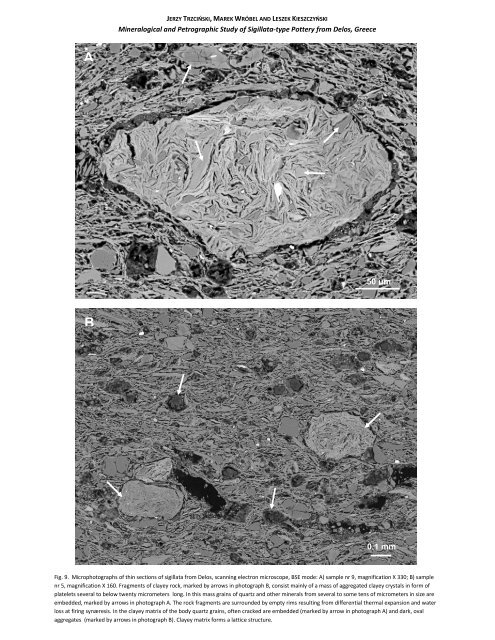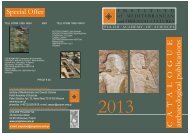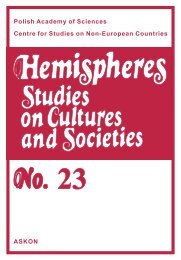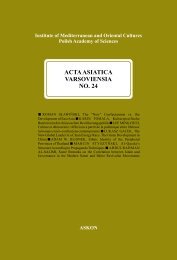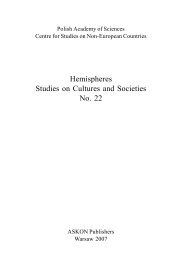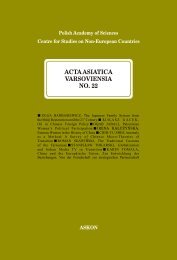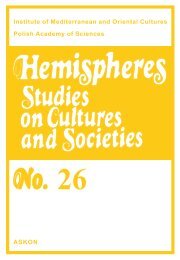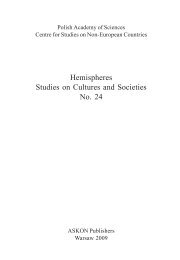JERZY TRZCINSKI, MAREK WRÓBEL AND LESZEK KIESZCZYNSKI
JERZY TRZCINSKI, MAREK WRÓBEL AND LESZEK KIESZCZYNSKI
JERZY TRZCINSKI, MAREK WRÓBEL AND LESZEK KIESZCZYNSKI
Create successful ePaper yourself
Turn your PDF publications into a flip-book with our unique Google optimized e-Paper software.
A<br />
B<br />
<strong>JERZY</strong> TRZCIŃSKI, <strong>MAREK</strong> <strong>WRÓBEL</strong> <strong>AND</strong> <strong>LESZEK</strong> KIESZCZYŃSKI<br />
Mineralogical and Petrographic Study of Sigillata-type Pottery from Delos, Greece<br />
50 µm<br />
0,1 mm<br />
Fig. 9. Microphotographs of thin sections of sigillata from Delos, scanning electron microscope, BSE mode: A) sample nr 9, magnification X 330; B) sample<br />
nr 5, magnification X 160. Fragments of clayey rock, marked by arrows in photograph B, consist mainly of a mass of aggregated clayey crystals in form of<br />
platelets several to below twenty micrometers long. In this mass grains of quartz and other minerals from several to some tens of micrometers in size are<br />
embedded, marked by arrows in photograph A. The rock fragments are surrounded by empty rims resulting from differential thermal expansion and water<br />
loss at firing synæresis. In the clayey matrix of the body quartz grains, often cracked are embedded (marked by arrow in photograph A) and dark, oval<br />
aggregates (marked by arrows in photograph B). Clayey matrix forms a lattice structure.


